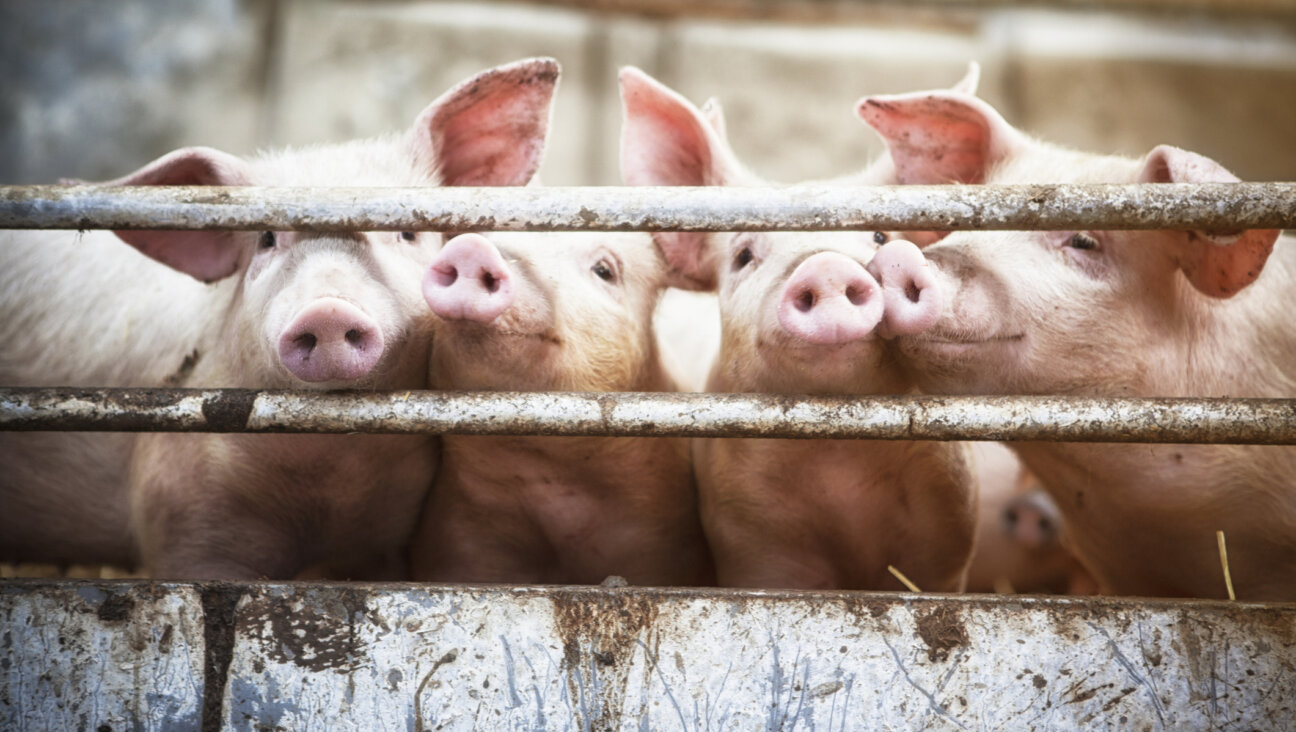NBC’s Jacob Soboroff on the ongoing crisis of family separation

Families at the U.S. Border Patrol McAllen Station Centralized Processing Center. Image by Getty/Handout
Jacob Soboroff was among the first American civilians to witness what family separation looked like. By the time the NBC and MSNBC correspondent arrived at the Casa Padre center in Brownsville, Tex. in June 2018, the policy had already affected thousands of migrants.
“Going to a former Walmart that’s 250,000 square feet and seeing 1,500 boys, hundreds of whom had been separated from their parents. It was hard to comprehend in the moment,” Soboroff said. “And then to go in days later to the McAllen Border Patrol Processing Center and see the kids in cages and laying on the floor on the concrete or with a Mylar blanket and being supervised by a security contractor, literally in a watchtower — there really is no way to describe the emotions that you feel.”
In his new book, “Separated: Inside an American Tragedy,” Soboroff chronicles the crossed wires and cold calculation that fostered America’s most glaring humanitarian crisis in recent memory. It’s a chronological account of his own reporting at the border interwoven with accounts of the efforts of career government professionals who worked to block or advance the zero-tolerance immigration policy used to justify family separation. Most affectingly, the book is also a portrait of a Guatemalan father, Juan, and his teenage son, Jose, who sought asylum in the U.S., only to be forced apart as they crossed from Mexico into Arizona.
When Soboroff was speaking to me from his home in Los Angeles, his four-and-a-half-year-old son interrupted our call to ask him a question. It was a small reminder of the simple domesticity so many migrants lost at the hands of a country they turned to for help.
“What I continually think about is the way it made me feel pales in comparison to what these families went through,” Soboroff said of visiting the shelter and processing center. “It’s indescribable that the United States government, which to them represented safety and security, would forcibly remove them from one another and traumatize them in the process.”
The following conversation has been edited for length and clarity.
PJ Grisar: Your reporting on family separation took off when it was already well underway. What more did you learn while working on the book?

Jacob Soboroff Image by Art Streiber for MSNBC
Jacob Soboroff: There were multiple inflection points where this could have been stopped. People [in Health and Human Services and the Office of Refugee Resettlement] understood that this was going to be a massive problem on multiple levels at multiple points and leadership did not heed those warnings and so what you ended up with was 5,000 kids who are gonna have lifelong trauma. The United States government — [according to] Physicians for Human Rights – ended up torturing these children by doing what they were doing to them.
You don’t let previous administrations off the hook for this crisis. Family separation was proposed under the Obama presidency and was also happening on a limited scale then, too.
It’s not just in the Trump administration. Deterrence, which is what this policy was intended to be, has been the underlying philosophy of American border policy at least since the Clinton administration. And [Obama] did deport more people than any other president, but it is really important to note that the Trump administration has taken this to a place that is so extreme and so vile, honestly, that they decided that torturing children – in the estimation of these experts — was worth it to stop people from coming to the United States.
This news now feels quite far away, but the damage for many will last a lifetime. What do you want readers to remember about this chapter in our history?
That the American people together were able to stop it. When they were made aware of what was happening, tens of thousands of people went out into the streets. Trump said himself he didn’t like the sights and the sounds and the pictures of what was happening to the children and he basically admitted that there was public pressure that forced him to reverse a policy that days earlier he wouldn’t even admit existed. We’re in a similar moment today; when enough people come together and demand real change it is possible. Separation as a tool of the administration still exists.
I expected former Homeland Security Secretary Kirstjen Nielsen, who you interviewed, to feature big in the cruelty of this practice. In a lot of ways Stephen Miller’s now-wife Katie Miller (née Waldman), who was on Nielsen’s staff, looms larger. What struck you about her?
If it weren’t for Katie, I wouldn’t have gotten into these places and for that I’m grateful — she gave me access. But the way that she and others approached this in the administration was always to be a forceful defender of it. She said this to me: What people ended up seeing was going to so revile them that Congress would change the laws to do what the Trump administration wanted, which was to deport kids immediately who were here unaccompanied.
It’s upsetting that they would be so forthcoming about that intention: These are awful images meant for deterrence.
Well, that’s what deterrence is. What was strange about it was that there were members of the administration who were denying it was happening. But all along Katie was frank with me about what we were seeing, and once we saw it with our own eyes there was no way to deny it. I think that’s why the president was forced to do something about it.
And your reporting shows that Trump considered reviving the policy.
Yeah, how about that story? When they’re on the chopper together going to see tornado damage, instead of thinking about what’s outside the window, [Trump] looks at Secretary Nielsen, who is on Marine One with Ben Carson and Melania Trump, and talks about restarting the policy. And if it hadn’t been for Melania Trump saying “No, we can’t do that,” who knows what he would have done.
You follow a separated father and a son in the book — Juan and Jose — were they the only people affected by this policy that you had extended contact with?
There were others as well. But I decided to follow Juan and Jose specifically because their story isn’t perfect. [Juan] did come here as an economic migrant on several occasions to support his family back home and when it did turn dangerous for him he came back again with his son. I want people to understand that it’s OK to want to declare asylum when you haven’t previously. I thought their story was one that we could learn from.
In the epilogue you allude to our current health crisis and how the administration is bungling its response. Do you find parallels between their handling of immigration and their actions now?
Not only are there direct parallels, a lot of the people directly involved in the current Covid response are people who were directly involved in the response to family separations. It doesn’t give me much faith in the response to Covid knowing the people who were involved in family separations are involved in that process.
PJ Grisar is the Forward’s culture reporter. He can be reached at [email protected].
A message from our CEO & publisher Rachel Fishman Feddersen

I hope you appreciated this article. Before you go, I’d like to ask you to please support the Forward’s award-winning, nonprofit journalism during this critical time.
We’ve set a goal to raise $260,000 by December 31. That’s an ambitious goal, but one that will give us the resources we need to invest in the high quality news, opinion, analysis and cultural coverage that isn’t available anywhere else.
If you feel inspired to make an impact, now is the time to give something back. Join us as a member at your most generous level.
— Rachel Fishman Feddersen, Publisher and CEO
























